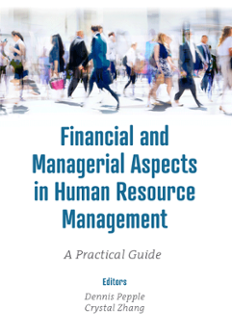
Index
Financial and Managerial Aspects in Human Resource Management: A Practical Guide
ISBN: 978-1-83909-615-0, eISBN: 978-1-83909-612-9
Publication date: 13 January 2021
Citation
(2021), "Index", Pepple, D. and Zhang, C. (Ed.) Financial and Managerial Aspects in Human Resource Management: A Practical Guide, Emerald Publishing Limited, Leeds, pp. 161-165. https://doi.org/10.1108/978-1-83909-612-920211014
Publisher
:Emerald Publishing Limited
Copyright © 2021 Emerald Publishing Group Limited
INDEX
Index
Note: Page numbers followed by “n” indicate notes.
- Prelims
- Part A: Financial Aspects
- Chapter 1: Introduction to Financial Accounting
- Chapter 2: Income Statement and Balance Sheet
- Chapter 3: Interpretation of Financial Statements
- Chapter 4: Financial Ethics
- Part B: Managerial Aspects
- Chapter 5: Towards Understanding How the HR Function Relates to the Accounting Function
- Chapter 6: Managing Learning and Development Cost
- Chapter 7: Managing Redundancy
- Chapter 8: Managing Disciplinary and Grievance Cost
- Chapter 9: Managing Relocation Costs
- Chapter 10: Managing Family-friendly Policies
- Chapter 11: Executive Compensation: Transparency, Corporate Governance and Corporate Social Responsibility Perspectives
- Chapter 12: Solutions to Reflection Questions and Answers
- Glossary
- Index